Enhancing quality of life with wireless sensor technology
By E.Kartsakli, A.Antonopoulos,S .Tennina, A. Lalos, P.V.Mekikis, L.Alonso, F.Graziosi, M. Di Renzo and Ch.Verikoukis
A co-operative project involving both industry and academia is designing an innovative Wireless Sensor Network for more effective healthcare of elders.
The median age of the world population has shown a steady increase over the last 50 years, mainly due to the reduction of fertility and the 20-year increase in the average life expectancy. These factors, combined with the elevated birth rate observed in many countries during the decades following World War II, have led to a shift in the distribution of the population towards older ages in most regions of the planet. On the other hand, the average lifespan worldwide is expected to increase by 10 years by 2050.
The growing number of aging population poses a strain on the public healthcare system and on medical and social services. Public healthcare programs must now respond to the additional challenges and costs, including the management of chronic illnesses, injuries and disabilities. In other words, the above projected demographic shift will have a tremendous impact on society and will ask for specific actions to be put in place to deal with it in the next years. The use of information and communication technologies to facilitate and improve healthcare and medical services, often referred to by the term e-Health, is bringing a shift to healthcare delivery. Furthermore, the concept of Wireless Sensor Networks (WSNs) fits into the new trend of device connectivity, empowering a new series of applications for enhanced quality of life through technology.
The new healthcare paradigm involves the use of appropriate sensor devices on patients to enable the remote monitoring of vital signals, the early detection of critical conditions and the remote control of certain medical treatments [1]. The medical sensors, placed in the vicinity of, or inside, the human body, are usually interconnected through a short-range wireless technology, thus forming a Wireless Body Area Network (WBAN). The sensory data are collected by a gateway node and are forwarded to a remote online server, where processing and integration with medical-related software applications take place.
The emerging application scenarios are numerous, including the active management of diseases such as diabetes (e.g., by measuring blood sugar levels and controlling the insulin dosage accordingly), the support for independent aging to the elderly (e.g., by tracking their medication intake and their activity level) and the monitoring of personal fitness activities to improve health and well-being (e.g., by logging health and fitness indicators during workouts) [1]. In this context, the Marie Curie Project Wireless Sensor Networks for Quality of Life (WSN4QoL) is committed to create a fully-integrated and multidisciplinary program on the development of WSN technologies for pervasive healthcare applications, ensuring enhanced quality, efficiency, flexibility and cost reductions in healthcare delivery.
WSN4QoL Scenarios
WSN4QoL defines three scenarios for pervasive healthcare that will provide a framework for the design of WSN algorithms and protocols, namely a single patient scenario, a multi-patient scenario and localization and tracking scenario.
The single patient scenario involves the collection of medical data from a single patient by a coordinator and their delivery to a central unit through a distribution network (often a WSN), depicted in 1. The network architecture can be divided into two parts, the WBAN and the distribution network.
The WBAN is formed among the multiple sensors deployed on the patient that can be either implants or on-body detachable devices. Different sensors are employed in order to measure various metrics such as respiratory rate, blood pressure, oxygen saturation, etc., thus leading to a network with heterogeneous traffic. The WBAN also includes a coordinator that is responsible for controlling the network and collecting all the sensor data, which are, then, relayed to the distribution network via a gateway.
The distribution network is responsible for the communication between the WBAN and the central control unit (e.g., the laptop of the treating physician). This communication can take place in both directions. On the one hand, the patient data collected by the WBAN should be transferred in a prompt and reliable way to the central control unit, in order to be revised by the responsible medical personnel. On the other hand, depending on the situation, the treating physician could adjust the monitoring scheme (e.g., modify the sampling rate of some sensors) or update the treatment regime (e.g., optimize the dose of an insulin injection for a patient with diabetes). In this case, the distribution network should deliver the new treatment decisions to the WBAN coordinator which, in turn, should forward the message to the corresponding sensors (in the example of diabetes, to the implanted insulin pump).
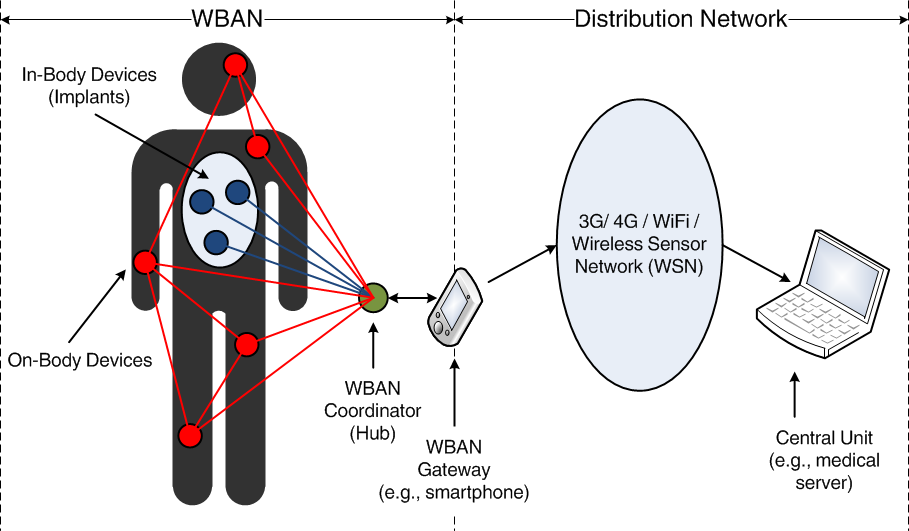
Figure 1: Single Patient Scenario.
In the multi-patient scenario, depicted in 2, several patients are being monitored within a confined space (e.g., a clinic room, a hospital wing, etc.). The sensors carried by each patient form a WBAN with a single coordinating node per patient. The coordinator is responsible of collecting all the data and forwarding it to the central unit, through an ambient WSN. The total network traffic may be homogeneous, if all patients wear the same type of sensors, or heterogeneous otherwise.
This scenario can be considered as an extension of the single patient case, introducing additional challenges such as the opportunity for cooperation between coordinators, frequency selection to reduce interference between WBANs, patient mobility, etc.
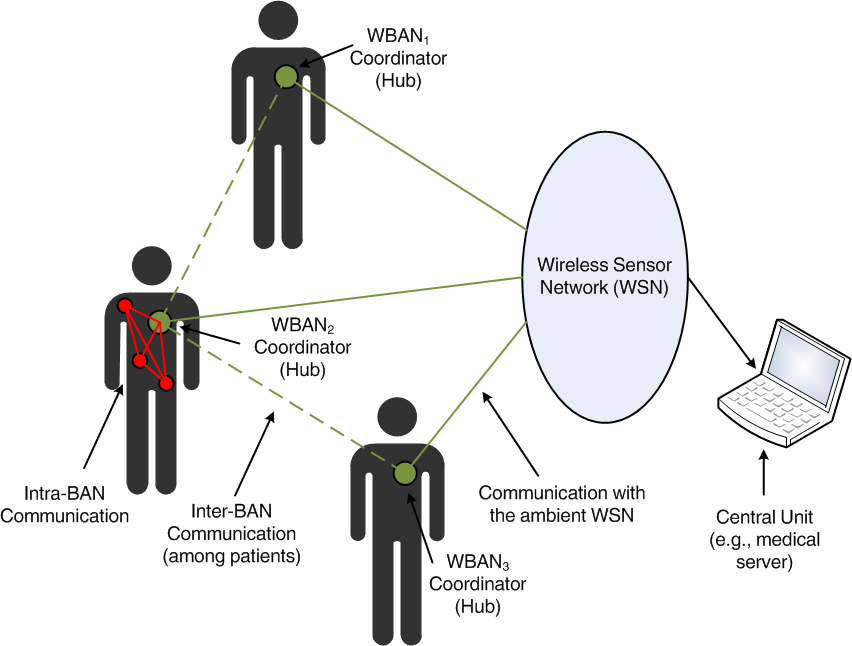
Figure 2: Multi-patient scenario.
Finally, the localization and tracking scenario is focused on the estimation of the patient’s position and movement tracking, in both indoor and outdoor environments. Considering the topology of the second scenario, the localization and tracking of the WBAN coordinators through the ambient WSN is considered. An example is given in 3, where the ambient WSN, composed by anchor nodes covers a given area and is used to track the trajectory of mobile patients that form independent WBANs.
![]()
Figure 3: Proposed scenario for the localization and tracking (multi-patient single-WSN case).
Research Objectives
The main research efforts within the WSN4QoL project are oriented towards:
- Energy efficiency: In order to increase the battery lifespan of the sensor nodes and ensure the continuous network operation for several days between recharge cycles careful management of radio communications and data processing is required.
- Multi-hop/cooperative networking: Multi-hop wireless connectivity enhanced by cooperative techniques is required to enable the continuous monitoring of critical vital patient parameters without range limitations.
- Network coding: The application of network coding at the Physical and Medium Access Control layer (MAC) can improve error resilience and data reliability and enhance the overall performance, especially in the context of cooperative networks.
- Security: Patient physiological data is highly confidential and security must be ensured throughout the healthcare application scenario.
- Distributed Localization: Distributed localization algorithms must be developed to provide further information of the environment and activities of the monitored patients and significantly enhance the quality of healthcare.

Figure 4: Main research challenges of WSN4QoL.
For Further Reading
1. ETSI, “Machine to Machine Communications (M2M): Use Cases of M2M Applications for eHealth,” Draft TR 102732 v0.4.1, Mar. 2011.
Contributors
 E. Kartsakli received her PhD in Wireless Telecommunications from the Technical University of Catalonia (BarcelonaTECH) She has participated in several national and European projects. Her research interests include wireless networking, channel access protocols and energy efficient communication protocols. Read more
E. Kartsakli received her PhD in Wireless Telecommunications from the Technical University of Catalonia (BarcelonaTECH) She has participated in several national and European projects. Her research interests include wireless networking, channel access protocols and energy efficient communication protocols. Read more
 Angelos Antonopoulos received his Ph.D. from Technical University of Catalonia (UPC). He is currently working as a Post-Doctoral Researcher at the Smart Energy Efficient Communication Technologies (SMARTECH) area of the Telecommunications Technological Centre of Catalonia (CTTC) and his main research interests include cooperative communications, MAC protocols, network coding and energy efficient network planning. Read more
Angelos Antonopoulos received his Ph.D. from Technical University of Catalonia (UPC). He is currently working as a Post-Doctoral Researcher at the Smart Energy Efficient Communication Technologies (SMARTECH) area of the Telecommunications Technological Centre of Catalonia (CTTC) and his main research interests include cooperative communications, MAC protocols, network coding and energy efficient network planning. Read more
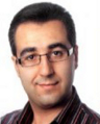 Stefano Tennina received the Ph.D. degree in Electrical and Information Engineering from the University of L’Aquila, Italy. He is co-founder of WEST Aquila s.r.l. with the role of Senior Research Scientist. His research interests focus is in the area of wireless communication protocols/systems, with particular emphasis on experimentation activities in real working networks test-beds. Read more
Stefano Tennina received the Ph.D. degree in Electrical and Information Engineering from the University of L’Aquila, Italy. He is co-founder of WEST Aquila s.r.l. with the role of Senior Research Scientist. His research interests focus is in the area of wireless communication protocols/systems, with particular emphasis on experimentation activities in real working networks test-beds. Read more
 Aris S. Lalos received the Ph.D. degree in signal processing for wireless communications from the Computer Engineering and Informatics Department (CEID), School of Engineering (SE), University of Patras (UoP), Rio-Patras, Greece. He is currently a Postdoctoral Fellow at signal theory and communication department, Technical University of Catalonia, Barcelona, Spain. Read more
Aris S. Lalos received the Ph.D. degree in signal processing for wireless communications from the Computer Engineering and Informatics Department (CEID), School of Engineering (SE), University of Patras (UoP), Rio-Patras, Greece. He is currently a Postdoctoral Fellow at signal theory and communication department, Technical University of Catalonia, Barcelona, Spain. Read more
 Prodromos-Vasileios Mekikis holds a Master of Science in System on Chip design from Royal Institute of Technology (KTH) He is currently pursuing a PhD degree at the Signal Theory and Communications department (TSC) of the Technical University of Catalonia (UPC). His main research interests include cooperative communications and large scale wireless sensor networks. Read more
Prodromos-Vasileios Mekikis holds a Master of Science in System on Chip design from Royal Institute of Technology (KTH) He is currently pursuing a PhD degree at the Signal Theory and Communications department (TSC) of the Technical University of Catalonia (UPC). His main research interests include cooperative communications and large scale wireless sensor networks. Read more
 Luis Alonso received the PhD from UPC (Barcelona) He is an Associate Professor at UPC. He is co-founder of the Wireless Communications and Technologies Research Group (WiComTec). His current research interests are within the field of medium access protocols, radio resource management, cross-layer optimization, cooperative transmissions, cognitive radio and QoS features for all kind of wireless communications systems. Read more
Luis Alonso received the PhD from UPC (Barcelona) He is an Associate Professor at UPC. He is co-founder of the Wireless Communications and Technologies Research Group (WiComTec). His current research interests are within the field of medium access protocols, radio resource management, cross-layer optimization, cooperative transmissions, cognitive radio and QoS features for all kind of wireless communications systems. Read more
 Fabio Graziosi received the Ph.D. degree in electronic engineering from the University of L’Aquila, Italy. He is the Chairman of the Board of Directors of WEST Aquila s.r.l.. He is also an Associate Professor at the University of L’Aquila, Italy. His current research interests are mainly focused on wireless communications systems with emphasis on wireless sensor networks. Read more
Fabio Graziosi received the Ph.D. degree in electronic engineering from the University of L’Aquila, Italy. He is the Chairman of the Board of Directors of WEST Aquila s.r.l.. He is also an Associate Professor at the University of L’Aquila, Italy. His current research interests are mainly focused on wireless communications systems with emphasis on wireless sensor networks. Read more
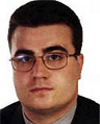 Marco Di Renzo received the Ph.D. degree from the University of L’Aquila, Italy. He received the H.D.R. degree from the University of Paris-Sud XI, France. He is a faculty member of the Laboratory of Signals and Systems, a joint laboratory of CNRS, SUPELEC and the University of Paris-Sud XI, France. Read more
Marco Di Renzo received the Ph.D. degree from the University of L’Aquila, Italy. He received the H.D.R. degree from the University of Paris-Sud XI, France. He is a faculty member of the Laboratory of Signals and Systems, a joint laboratory of CNRS, SUPELEC and the University of Paris-Sud XI, France. Read more
 Christos Verikoukis received his Ph.D. from the Technical University of Catalonia. He is currently the Head of the SMARTECH department at CTTC and he is an adjunct associate professor in the area of ICT for Healthcare at Barcelona University (UB). Read more
Christos Verikoukis received his Ph.D. from the Technical University of Catalonia. He is currently the Head of the SMARTECH department at CTTC and he is an adjunct associate professor in the area of ICT for Healthcare at Barcelona University (UB). Read more







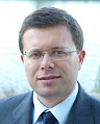 Joel José P. C. Rodrigues (S'01, M'06, SM'06) is a professor in the Department of Informatics of the University of Beira Interior, Covilhã, Portugal, and researcher at the Instituto de Telecomunicações, Portugal. He received a PhD degree in informatics engineering from the University of Beira Interior. His main research interests include sensor networks, e-health, e-learning, vehicular delay-tolerant networks, and mobile and ubiquitous computing.
Joel José P. C. Rodrigues (S'01, M'06, SM'06) is a professor in the Department of Informatics of the University of Beira Interior, Covilhã, Portugal, and researcher at the Instituto de Telecomunicações, Portugal. He received a PhD degree in informatics engineering from the University of Beira Interior. His main research interests include sensor networks, e-health, e-learning, vehicular delay-tolerant networks, and mobile and ubiquitous computing.  Hsi-Pin Ma is an Associate Professor of Department of Electrical Engineering at National Tsing Hua University, Hsinchu, Taiwan. He received his Ph. D. from National Taiwan University, Taipei, Taiwan. His research interests include communications system design and SoC implementation, power efficient/energy efficient signal processing, and biomedical signal processing and system applications.
Hsi-Pin Ma is an Associate Professor of Department of Electrical Engineering at National Tsing Hua University, Hsinchu, Taiwan. He received his Ph. D. from National Taiwan University, Taipei, Taiwan. His research interests include communications system design and SoC implementation, power efficient/energy efficient signal processing, and biomedical signal processing and system applications.  Hung-Chih Chiu is a Ph. D. student in the National Tsing Hua University since 2011. His research interests include biomedical signal processing and Very-large-scale integration (VLSI). He received the master degree at National Central University in 2010.
Hung-Chih Chiu is a Ph. D. student in the National Tsing Hua University since 2011. His research interests include biomedical signal processing and Very-large-scale integration (VLSI). He received the master degree at National Central University in 2010. 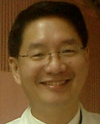 Yi-Lwun Ho MD. PhD., is an associate professor of Department of Internal Medicine and also an adjunct associate professor of Graduate Institute of Clinical Medicine, National Taiwan University (NTU) College of Medicine. He is a cardiologist and specialized in electro-physiologic studies of arrhythmia. One of his research emphases has been in telecare of cardiovascular diseases. He also used linear and non-linear analysis of heart rate variability to study the predictors of patients with heart failure. He is the Director of Heart Failure Center of NTU Hospital. He is also the Director of Tele-Health Center of NTU Hospital.
Yi-Lwun Ho MD. PhD., is an associate professor of Department of Internal Medicine and also an adjunct associate professor of Graduate Institute of Clinical Medicine, National Taiwan University (NTU) College of Medicine. He is a cardiologist and specialized in electro-physiologic studies of arrhythmia. One of his research emphases has been in telecare of cardiovascular diseases. He also used linear and non-linear analysis of heart rate variability to study the predictors of patients with heart failure. He is the Director of Heart Failure Center of NTU Hospital. He is also the Director of Tele-Health Center of NTU Hospital.  Yen-Hung Lin MD, PhD is clinical assistant professor of Internal Medicine at National Taiwan University College of Medicine and attending physician of Department of Internal Medicine at National Taiwan University Hospital. Dr. Lin received his MD degree in School of Medicine, National Taiwan University and his PhD degree in Graduate Institute of Clinical Medicine, School of Medicine, National Taiwan University. His research interests focus on cardiac and vascular function and structure change in primary aldosteronism, and biomarkers in various cardiovascular disease, including hypertensive heart disease, coronary artery disease, and heart failure
Yen-Hung Lin MD, PhD is clinical assistant professor of Internal Medicine at National Taiwan University College of Medicine and attending physician of Department of Internal Medicine at National Taiwan University Hospital. Dr. Lin received his MD degree in School of Medicine, National Taiwan University and his PhD degree in Graduate Institute of Clinical Medicine, School of Medicine, National Taiwan University. His research interests focus on cardiac and vascular function and structure change in primary aldosteronism, and biomarkers in various cardiovascular disease, including hypertensive heart disease, coronary artery disease, and heart failure  E. Kartsakli received her PhD in Wireless Telecommunications from the Technical University of Catalonia (BarcelonaTECH) She has participated in several national and European projects. Her research interests include wireless networking, channel access protocols and energy efficient communication protocols.
E. Kartsakli received her PhD in Wireless Telecommunications from the Technical University of Catalonia (BarcelonaTECH) She has participated in several national and European projects. Her research interests include wireless networking, channel access protocols and energy efficient communication protocols.  Angelos Antonopoulos received his Ph.D. from Technical University of Catalonia (UPC). He is currently working as a Post-Doctoral Researcher at the Smart Energy Efficient Communication Technologies (SMARTECH) area of the Telecommunications Technological Centre of Catalonia (CTTC) and his main research interests include cooperative communications, MAC protocols, network coding and energy efficient network planning.
Angelos Antonopoulos received his Ph.D. from Technical University of Catalonia (UPC). He is currently working as a Post-Doctoral Researcher at the Smart Energy Efficient Communication Technologies (SMARTECH) area of the Telecommunications Technological Centre of Catalonia (CTTC) and his main research interests include cooperative communications, MAC protocols, network coding and energy efficient network planning.  Stefano Tennina received the Ph.D. degree in Electrical and Information Engineering from the University of L'Aquila, Italy. He is co-founder of WEST Aquila s.r.l. with the role of Senior Research Scientist. His research interests focus is in the area of wireless communication protocols/systems, with particular emphasis on experimentation activities in real working networks test-beds.
Stefano Tennina received the Ph.D. degree in Electrical and Information Engineering from the University of L'Aquila, Italy. He is co-founder of WEST Aquila s.r.l. with the role of Senior Research Scientist. His research interests focus is in the area of wireless communication protocols/systems, with particular emphasis on experimentation activities in real working networks test-beds.  Aris S. Lalos received the Ph.D. degree in signal processing for wireless communications from the Computer Engineering and Informatics Department (CEID), School of Engineering (SE), University of Patras (UoP), Rio-Patras, Greece. He is currently a Postdoctoral Fellow at signal theory and communication department, Technical University of Catalonia, Barcelona, Spain.
Aris S. Lalos received the Ph.D. degree in signal processing for wireless communications from the Computer Engineering and Informatics Department (CEID), School of Engineering (SE), University of Patras (UoP), Rio-Patras, Greece. He is currently a Postdoctoral Fellow at signal theory and communication department, Technical University of Catalonia, Barcelona, Spain.  Prodromos-Vasileios Mekikis holds a Master of Science in System on Chip design from Royal Institute of Technology (KTH) He is currently pursuing a PhD degree at the Signal Theory and Communications department (TSC) of the Technical University of Catalonia (UPC). His main research interests include cooperative communications and large scale wireless sensor networks.
Prodromos-Vasileios Mekikis holds a Master of Science in System on Chip design from Royal Institute of Technology (KTH) He is currently pursuing a PhD degree at the Signal Theory and Communications department (TSC) of the Technical University of Catalonia (UPC). His main research interests include cooperative communications and large scale wireless sensor networks.  Luis Alonso received the PhD from UPC (Barcelona) He is an Associate Professor at UPC. He is co-founder of the Wireless Communications and Technologies Research Group (WiComTec). His current research interests are within the field of medium access protocols, radio resource management, cross-layer optimization, cooperative transmissions, cognitive radio and QoS features for all kind of wireless communications systems.
Luis Alonso received the PhD from UPC (Barcelona) He is an Associate Professor at UPC. He is co-founder of the Wireless Communications and Technologies Research Group (WiComTec). His current research interests are within the field of medium access protocols, radio resource management, cross-layer optimization, cooperative transmissions, cognitive radio and QoS features for all kind of wireless communications systems.  Fabio Graziosi received the Ph.D. degree in electronic engineering from the University of L'Aquila, Italy. He is the Chairman of the Board of Directors of WEST Aquila s.r.l.. He is also an Associate Professor at the University of L'Aquila, Italy. His current research interests are mainly focused on wireless communications systems with emphasis on wireless sensor networks.
Fabio Graziosi received the Ph.D. degree in electronic engineering from the University of L'Aquila, Italy. He is the Chairman of the Board of Directors of WEST Aquila s.r.l.. He is also an Associate Professor at the University of L'Aquila, Italy. His current research interests are mainly focused on wireless communications systems with emphasis on wireless sensor networks.  Marco Di Renzo received the Ph.D. degree from the University of L'Aquila, Italy. He received the H.D.R. degree from the University of Paris-Sud XI, France. He is a faculty member of the Laboratory of Signals and Systems, a joint laboratory of CNRS, SUPELEC and the University of Paris-Sud XI, France.
Marco Di Renzo received the Ph.D. degree from the University of L'Aquila, Italy. He received the H.D.R. degree from the University of Paris-Sud XI, France. He is a faculty member of the Laboratory of Signals and Systems, a joint laboratory of CNRS, SUPELEC and the University of Paris-Sud XI, France.  Christos Verikoukis received his Ph.D. from the Technical University of Catalonia. He is currently the Head of the SMARTECH department at CTTC and he is an adjunct associate professor in the area of ICT for Healthcare at Barcelona University (UB).
Christos Verikoukis received his Ph.D. from the Technical University of Catalonia. He is currently the Head of the SMARTECH department at CTTC and he is an adjunct associate professor in the area of ICT for Healthcare at Barcelona University (UB).